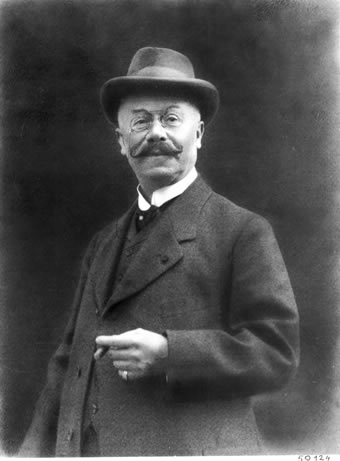
TAKING HIS DAUGHTER’S NAME
You may not know the name Emil Jellinek but it is highly likely that you know the name of his daughter.
Emil Jellinek was a successful Austrian businessman who had homes in Baden near Vienna and Nice.
With a love of speed, he took an early interest in the arrival of the automobile and in 1897, he made the journey to Cannstatt to visit the Daimler factory and ordered his first Daimler car – a belt-driven vehicle with a six-hp two-cylinder engine.
The car had for its time an impressive top speed of 24 km/h but this was soon too slow for Jellinek. He ordered two more vehicles but demanded that they have a top speed of 40km/h. The two Daimler Phoenix cars he was to receive in response were the world’s first road vehicles with four-cylinder engines.
Emil Jellinek was well connected with the world of international finance and even the aristocracy and so decided to put those contacts to good use. He negotiated a deal with Daimler and began to promote and sell their cars. In 1899, Daimler-Motoren-Gesellschaft (DMG) supplied Jellinek with ten vehicles; in 1900 the number went up to 29.
Jellinek however continued to demand ever faster and more powerful vehicles for himself, as he had decided he wanted to enter in the new world of automotive race meetings – first and foremost of which was the Nice Week.
Jellinak decided to name his team after his then ten years old daughter and due to his success it was a name that was soon well known in motoring circles.

In 1900 following on his success Jellinek and DMG signed an agreement to produce a new engine which would bear a product that that was a combination of Daimiler and Jellinak’s daughter. Jellinek ordered 36 of the vehicles with the new engines at a total price of 550,000 marks – a huge and very valuable order for the time, but just a few weeks later, he placed a new order for another 36 vehicles.
The first vehicle to be fitted with the new engine, a 35-hp racing car, was delivered to Jellinek by DMG on December 22, 1900. It had been developed by Wilhelm Maybach, the chief engineer at DMG. With its low centre of gravity, pressed-steel frame, lightweight high-performance engine and honeycomb radiator, it featured numerous innovations and is still regarded by many as the first modern automobile.
Nice Week in 1901, proved an enormous success and attracted even more publicity for Jellinek and the new cars. DMG quickly launched sister 12/16-hp and 8/11-hp sister models. 
On June 23, 1902, it was agreed to lodge an application for DMG to use Jellinek’s daughter name as the trade name and this was legally registered on September 26.
His daughter’s name which means ‘grace’ in Spanish was, of course, Mercédès.
From June 1903, Emil Jellinek obtained permission to call himself Jellinek-Mercedes and commented that “this is probably the first time a father has taken his daughter’s name.”